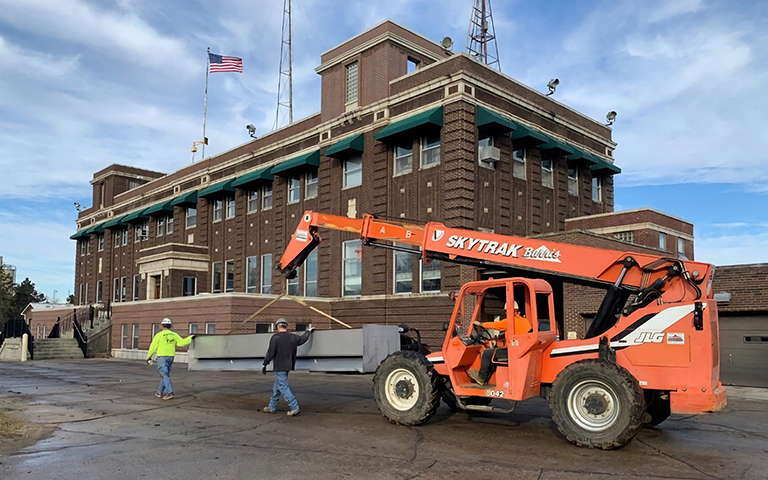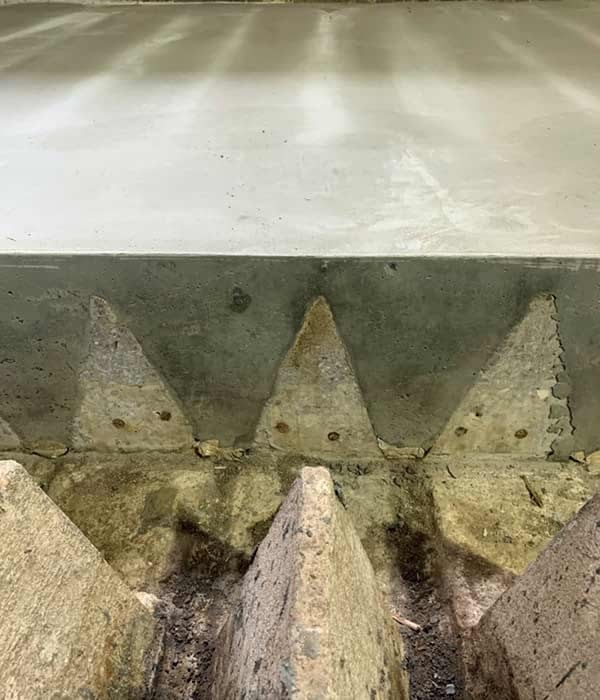Waukegan Reconstructs 1929 Filters
On Time, Within Budget LAZERFLO®-MULTWASH® Retrofit

Problem
The City of Waukegan provides water service to more than 88,500 residential and commercial customers in the greater Waukegan area. Its proud history of service dates back to 1849, when it began offering water via its first public well (which was located at the intersection of Washington and Genesee Streets in Waukegan, Illinois). The City switched from well water to water from Lake Michigan in 1895 with the introduction of its first lake intake pipe and pump station.
The City launched its first water filtration and pumping plant in 1928, initiated important system improvements from 1952 to 1966, and undertook a major plant expansion in 1967. As it evolved, the plant added various treatment processes to its finished water, including aluminum sulfate and polymer to reduce turbidity, chlorine to protect customers from pathogens, and fluoride to reduce tooth decay.
In the fall of 2017, after decades of smaller improvements, the City of Waukegan commissioned a needs assessment that recommended a number of capital, operational, and water treatment plant (WTP) improvements.
Based on these recommendations, the City selected the design-build team of Baxter & Woodman (consulting engineers) and Boller Construction (local Waukegan contractors) to execute the project at a guaranteed maximum price (GMP) of $4.2 million. The city imposed a 360-day delivery schedule for the project, which included reconstructing five 92-year-old filters in the plant’s west bay.
Within this short timeline, the engineer and contractor had to perform lead abatement, replace oversized inlet gates, replace five obsolete underdrain systems, add air wash systems, and much more – all within an aging facility where equipment replacements would be in difficult locations.
Analysis of Alternatives
The design build team approached WesTech for help with the underdrain and air-wash system. The team knew from past experience that WesTech had a variety of underdrain systems that could be paired with the market-leading MULTIWASH® backwash baffled trough system, which would improve the filter system’s performance.
When the WesTech team examined the existing filter cells, it found several conditions that would limit the type of replacement underdrains the City could use. Each of the filter cells measured just 6 ½ feet (2 meters) from the existing underdrain to the gullet. As for the underdrains (which had been state-of-the-art technology in 1929 when the City installed them), they consisted of concrete teepees atop brass laterals. Removing them would be too expensive and time consuming to work within the project’s parameters.

Recommended Solution
Given the project’s time, space, and budgetary constraints, the WesTech team recommended the LAZERFLO® underdrain and MULTIWASH backwash systems. At only 6 inches (15 centimeters) high, the low-profile LAZERFLO underdrain system could fit atop the existing underdrain and still allow the cell to accommodate an appropriate media depth. The LAZERFLO underdrain encompasses a series of factory-assembled, laser-slotted stainless-steel strips that are sized to fit the length of the filter cell. The strips nest together and bolt directly to the cell floor, making the system strong and simple to install. Its flat, obstacle-free surface is ready and safe for foot traffic without the concerns associated with other underdrains.
The LAZERFLO underdrain is also compatible with MULTIWASH backwash system, which provides simultaneous air and water backwash while overflowing trough weirs. Special media-retaining baffles that help prevent media loss during the backwash process are factory installed on the MULTIWASH trough. The use of sustained simultaneous air and water backwash provides a vigorous scouring action that can effectively clean the media even with the toughest fouling conditions. The high energy introduced during this process promotes enhanced media grain collisions compared with alternative water-only or air-followed-by-water backwash processes. As a result, higher percentages of adhered particles are dislodged from the media bed and mud-balling is eliminated. The combined water and air rates associated with this process fully expand the filter bed, thus enhancing the removal of dislodged solids with the backwash water.
“It had to be LAZERFLO underdrains and it had to be MULTIWASH backwash,” says WesTech Applications Engineer Peter Levorson. “Our low-profile design was the only design on the market that would actually physically fit while giving them the performance upgrade they needed.”
| Number of filters | 5 |
|---|---|
| Filter cell size | 20 ft x 18 ft 2 in (6.01 m x 5.55 m) |
| Backwash method | MULTIWASH - simultaneous air and water backwash |
| Backwash rates (air and water) | 2.75 scfm/ft2 (50 m/h) and 5 gpm/ft2 (12 m/h)* |
| Backwash rates (water only) | 15 gpm/ft2 (36 m/h)* |
| *The design backwash rate is based on a temperature of 25 degrees Celsius. Adjust the difference above the design temperature backwash water rate 2 percent up or down for each degree Celsius difference above or below the design temperature. | |
Implementation
The implementation team began the underdrain retrofit during the summer of 2019 by modifying the current underdrain’s concrete teepees. The team cut a flume through the teepees in the middle of the filter cell. In the front half of the filter cell, the team installed stainless-steel diverter plates to keep an open area where water could flow to and from an existing cast iron header that was embedded into the filter cell wall. On top of the diverter plates, the rest of the teepee was filled with the concrete upon which the LAZERFLO would be anchored. In the back half of the filter cell, the teepees were completely filled with concrete.
After adding the air headers, the team was ready to install the LAZERFLO, dual granular filter media, and MULTIWASH troughs. The LAZERFLO underdrain is designed for simple installation. A starter strip and individual LAZERFLO strips were each anchored to the concrete floor. The perimeter of the filter cell was filled with an expansion gasket on the strip ends and grout on the cell sides to account for uneven filter cell walls. Because of this simple installation, the underdrain was installed in less than half the time budgeted. Because its media-retention baffles are factory assembled to the washtrough, MULTIWASH troughs also proved to be a simple installation for the experienced crew of Boller Construction.
Results
Despite limitations that the existing underdrain and cell height imposed, work progressed quickly. The LAZERFLO’s simple, versatile design enabled the installation team to complete a complicated retrofit on time and within budget. The City brought the new filters online in early February 2020.
The plant’s present filtering capacity is 18 million gallons per day (GPD) –or 68,137 m3/d – with a short-period run capacity of 24 MGD (90,850 m3/d). It currently pumps treated water throughout the city and to neighboring communities through 230 miles (370 kilometers) of mains and has the capacity to supply water to developing parts of Lake County in the future. Due to the rapid success of this retrofit, the City of Waukegan extended the original contract to include the rehab of the five filters in the plant’s east bay, which should be completed in early 2021. The plant also plans to work with regulators to re-rate the filters for a higher flow capacity.
More Case Studies
-
 Municipal Water
Municipal WaterAltaPac™ Ultrafiltration System With Minimal Waste ...
-
 Municipal Wastewater
Municipal WastewaterSuperDisc™ Retrofit Replaces Traveling Bridge Filters
-
 Municipal Wastewater
Municipal WastewaterDAF Expansion and Upgrade Saves WRRF Millions